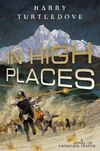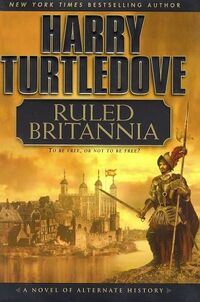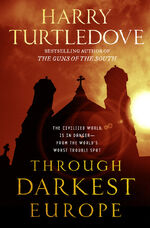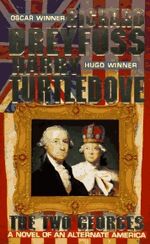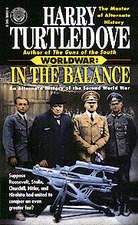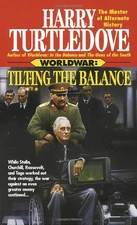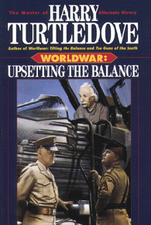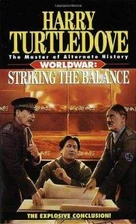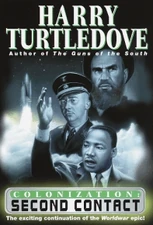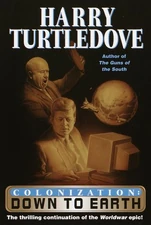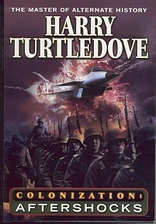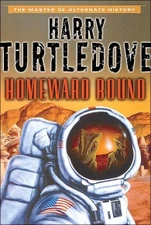| Republic of Ireland | |

| |
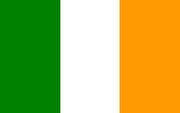
| |
| Country | |
| Continent: | Europe |
| Capital: | Dublin |
| National Language: | Irish and English |
| Government: | Unitary parliamentary republic |
| Status in OTL: | Active |
Ireland is the third largest island in Europe. Politically, the Republic of Ireland covers five-sixths of the island, with Northern Ireland, part of the United Kingdom, covering the remainder in the north-east.
The island was Christianised from the 5th century onward. Following the Norman invasion in the 12th century, England claimed sovereignty over Ireland. However, English rule did not extend over the whole island until the 16th–17th century Tudor conquest. This led to colonisation of Ireland by settlers from Britain. In the 1690s, a system of Protestant English rule was designed to materially disadvantage the Catholic majority and Protestant dissenters, and was extended during the 18th century. In 1801, Ireland became a part of the United Kingdom. A war of independence in the early 20th Century was followed by the partition of the island, creating the Irish Free State, which became increasingly sovereign over the following decades, and Northern Ireland which remained a part of the United Kingdom. Northern Ireland saw much civil unrest from the late 1960s until the 1990s. This subsided following a political agreement in 1998. In 1973, both parts of Ireland joined the European Economic Community.
Ireland in The Case of the Toxic Spell Dump[]
Eire was the source of large numbers of immigrants - human and otherwise - to the Confederated Provinces of America.
Ireland in In High Places[]
In an alternate where the Great Black Deaths killed 80% of the 14th century Europeans, Ireland remained a group of warring kingdoms into the 21st century.[1]
Due to the many wars among the disparate kingdoms in Ireland, interregnums were common.
Annette Klein reflected on the differences between that Ireland and the one she had visited in the home timeline.
Ireland in "Islands in the Sea"[]
By 769, numerous princes in Ireland retained complete political autonomy.[2]
Ireland in "Occupation Duty"[]
The Irish language was recognized as being related to Galatian, spoken at some locations in Europe, but they were not mutually intelligible, having split off from each other long ago. Antenor reflected that the languages of the Philistinians and the Ellenes were even further away from each other.[3]
Ireland in "The Pugnacious Peacemaker"[]
Along with Scandinavian settlers such as the Vikings, some Irish tribes also colonized North Skrelleland (North America). Their descendants were mostly assimilated with the descendants of the Vikings, as indicated by the name of the great city of New Belfast.
Ireland in Ruled Britannia[]
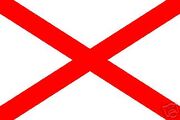
The St Patrick's Cross, flag of Ireland for much of its early history, including the years during which Ruled Britannia was set.
When Spain conquered England in 1588, Ireland was liberated. The Irish had steadfastly remained Catholic despite the persecutions of that religion by the Protestant monarchs Henry VIII, Edward VI, and Elizabeth (with a brief respite under the Catholic Queen Mary). Because of this, the Irish fared well under the militantly Catholic Hapsburg Empire.
The Irish were invited to send troops to help occupy England and enforce the rule of Queen Isabella and King Albert. Irish troops were known for their brutality in their enforcement of the Spanish order, no doubt as revenge for the oppressive English rule to which they had been subjected.
When Isabella and Albert were expelled from England in 1598, and Elizabeth was returned to the throne, English plans were swiftly drawn up for the reconquest of Ireland.
Ireland in Southern Victory[]

The tricolor flag of the Republic of Ireland
During the Great War, Ireland launched a successful rebellion against the British.[4] The uprising was heavily supported by both the United States and Germany, with the former taking the step of providing weapons to the rebels.[5] At the end of the war, Britain was forced to recognise the Republic.[6] The United Kingdom nonetheless clandestinely supported the Protestant loyalists in an early 1920s rebellion against the new Republic, centered in the northern part of the island. This was defeated with the help of both the US Navy -- in the form of the USS Remembrance shelling and bombing Belfast -- and the German High Seas Fleet.[7] The fall of Belfast marked the final unification of the Republic of Ireland.[8]
Britain invaded Ireland in the Second Great War, successfully subduing their former possession in mid-1941,[9] and imposing a harsh occupation.[10] Though their nation's Defense Forces were overwhelmed by the vastly-superior numbers and firepower of the British Armed Forces, the Irish remained defiant and maintained a strong resistance throughout the occupation.[11] They were once again supported in their campaign by the United States beginning in 1943, when the US Navy started to supply guns and ammunition to the rebels as they had in 1916.[12]
Ireland regained its independence in 1944, after Britain suffered three superbomb attacks by Germany, and sued for peace.[13]
Ireland in Through Darkest Europe[]
Ireland comprised numerous small autonomous minor kingdoms. In AD 2018, a number of Irish kinglets traveled to Rome to attend the funeral of Cosimo III, Grand Duke of Italy. At least one of these men was killed when the procession was attacked by Aquinists.[14]
Ireland in The Two Georges[]
Ireland was a long-standing part of the British Empire and likely to remain so, whatever the wishes of its inhabitants, as long as the international status quo of the world remained dominated by three stable empires. The situation in Ireland was influenced by the fact that across the Atlantic Ocean, people of Irish descent were among the most vocally dissident communities in the North American Union, nursing many grievances and providing much of the support of the underground Sons of Liberty and the legal but openly subversive Independence Party. The Kennedy family were a prime example.
During the Potato Famine, many Irish people immigrated to the NAU. They came a decade following the emancipation of slaves in the North American Union and the rest of the British Empire. Consequently, the immigrants were given jobs that involved hard and dangerous labour such as mining, while the Negroes were given safer and more "respectable" civil service positions. This caused friction between the two ethnic groups.
Jameson Irish Whiskey was distilled in Ireland and exported throughout the British Empire. Although not of Irish descent himself, Colonel Thomas Bushell of the Royal American Mounted Police was extremely fond of the drink.
Ireland in Worldwar[]
Ireland was neutral during World War II. Ireland was also not invaded by the Race during their invasion of Earth, and remained neutral.[15] As the Race had little interest in setting up colonies on small islands, it remained an independent lesser not-empire following the Peace of Cairo.[16]
Ireland in "The Yorkshire Mammoth"[]
Though the Ice Age had abated millennia ago, it left a number of glaciers in the northern parts of Ireland that persisted into the 20th century.
Mega fauna such as cave bears, dire wolves, and saber-toothed tigers vanished from England, Wales and Scotland during the Roman period, but survived in Ireland until the Norman invasion.[17]
See also[]
- Sapphire Isle, an island in The War Between the Provinces series that is based on Ireland.
References[]
- ↑ In High Places, pg. 46.
- ↑ Departures, p. 82.
- ↑ See e.g.: Atlantis and Other Places, pg. 241, HC.
- ↑ Walk in Hell, pg. 444, PB.
- ↑ See, e.g., pgs. 462-464.
- ↑ Blood and Iron, pg. 80.
- ↑ Ibid. pgs. 276-280
- ↑ Ibid. pg. 391.
- ↑ Return Engagement, pg. 86.
- ↑ In at the Death, pg. 50-51.
- ↑ Drive to the East, pg. 436.
- ↑ The Grapple, pgs. 488, 496-500.
- ↑ This isn't explicitly stated, but Britain was in no position to keep Ireland.
- ↑ Through Darkest Europe, loc. 1289, ebook.
- ↑ See, Worldwar series, generally.
- ↑ See, e.g., Second Contact, pg. 117.
- ↑ Clarksworld #155.
